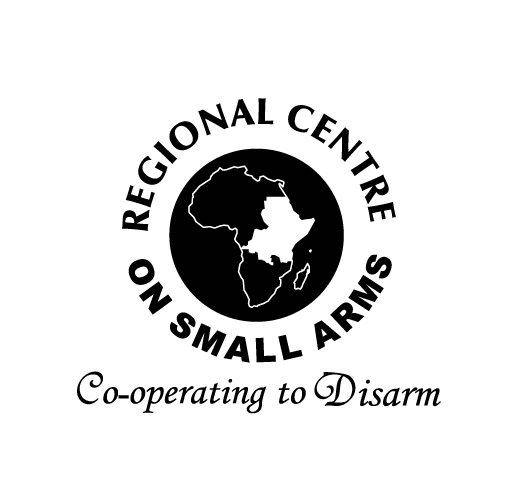EXECUTIVE SUMMARY
One of the major impediments to controlling the illicit proliferation of small arms and light weapons (SALW) is the difficulty in tracing their origin and movement within and across states. Developing effective mechanisms for marking and tracing weapons can help curb their proliferation by identifying; the sources, trade patterns, and points where weapons have been diverted from legal sources to illicit markets. In response to this, majority of RECSA Member States have been marking arms since 2009 and the Secretariat has been supporting electronic recording keeping through RECSA small arms tracing software (RSTS) since 2013. Over the years, RECSA has received support for arms marking equipment and capacity building from the United States of America Weapons Removal and Abetment (WRA), the European Union through East African Community and the African Union EU-funded project, the African Development Bank (AfDB) and The UN Trust Facility Supporting Cooperation on Arms Regulation (UNSCAR). The RSTS development and rollout has received support from the government of Japan through UNDP, the USA through WRA, EU, AfDB, and UNODA through UNSCAR.
With funding from UNSCAR, RECSA undertook this assessment with the purpose of assessing the status of arms marking and record keeping, using the RECSA small arms tracing software (RSTS) and the state of related accessories in all RECSA Member States. Data collection was undertaken through desktop research, questionnaire responses and field visits to six countries—Central African Republic (CAR), Ethiopia, Kenya, Rwanda, Tanzania and Uganda. Responses were received from nine Member States—CAR, Burundi, Ethiopia, Kenya, Rwanda, Seychelles, Sudan, Tanzania, and Uganda. Though the project targeted six Member States, the questionnaire was shared with all fifteen Member States and three (Burundi, Seychelles, and Sudan) responded making the total responses to nine. The data was coded, cleaned, and analyzed.
The key findings from the assessment are that most Police Service/Force in the Member States have embraced arms marking with most of their weapons marked while the uptake by the military is rather low. Several marking machines and their accessories have over the years broken down. Accessibility Firearms Marking and Electronic Record-keeping Report 16 of spare parts and capacity to undertake the repairs when the machines breakdown were highlighted as challenges. The number of people trained in arms marking is decreasing due to transfers and natural attrition. Some countries have however increased their numbers through internal on-job training.
The RSTS remains the superior product because of its high-security features, however, due to operational challenges ranging from malfunctioning when loaded with extensive sets of data, low capacity or quality of equipment deployed to support the system the uptake is slow and, in some cases, it is being abandoned. The servers deployed in Kenya, Tanzania and Uganda for example are not working.
In conclusion, it is important to emphasize that arms marking and record keeping initiatives are crucial components of RECSA’s efforts. Despite the challenges faced, these two endeavours should be pursued with increased determination. RECSA stands as the leading institution in Africa for compliance and implementation of the ITI. Although objectives for controlling SALW circulation are well-developed at the regional level in Africa, specialized entities focusing on small arms work closely with national institutions responsible for SALW control to centralize and streamline these efforts. (Berkol, 2018)
The assessment recommends that the Secretariat strategize on how to engage the military in the member states to embrace arms marking for those who are not doing it and they are the majority. RECSA to secure a spare parts distributorship for Couth machines at discounted prices and to be accompanied with training on repairs and emerging changes with the equipment to ensure a one stop support centre in the region. As for the RSTS, all the operational and technical challenges be addressed with a finality with a security mind. Member States on the other hand should commit budgetary support for these noble initiatives. People trained in these skills should be encouraged to transfer it to other colleagues through on-job training. The trained officers should be retained in the assignment as long as it would be possible while not jeopardising their career progression.
